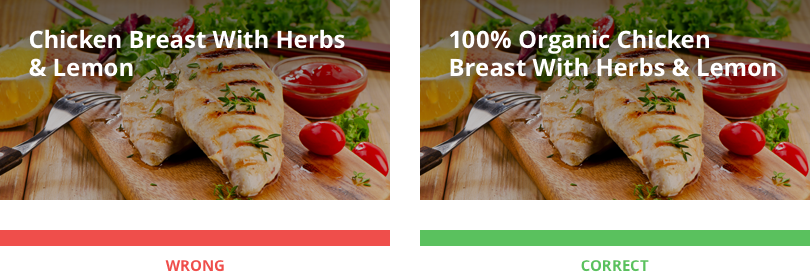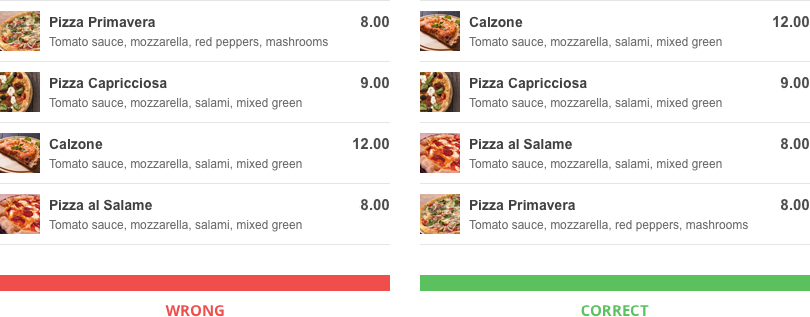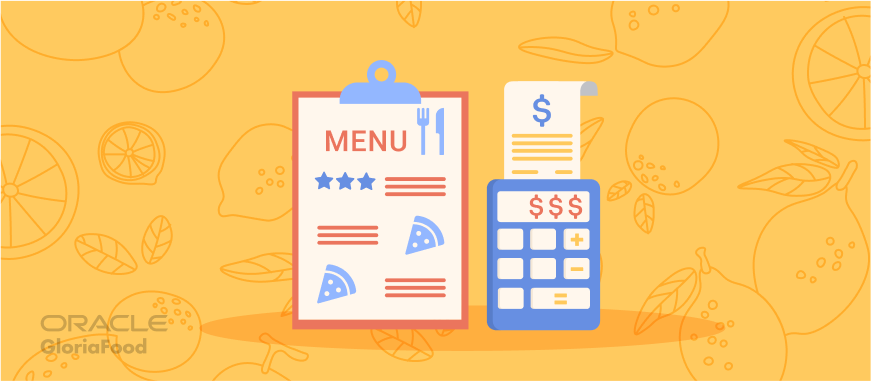- 1.What is menu pricing?
- 2.5 Menu pricing methods
- Cost-based menu pricing
- Profit-based menu pricing
- Market rate pricing
- Dynamic pricing
- Prix fixe pricing
- 3.6 Menu pricing strategies to increase profit
- Highlight the inherent price of your food
- Choose price numbers that have fewer syllables
- Use expensive decoy food at the top of the menu
- Use the power of charm pricing
- Delete the currency sign
- Charge clients before consuming
- 4.Final words
Pricing restaurant menu items is like finding the balance when walking on a tightrope. If you go too high, customers will avoid your establishment and if you go too low, you won’t be able to make a profit and stay open.
If you want to own a successful restaurant, you need to be aware of all menu pricing methods and choose the ones that work best for your business and audience.
In this article, you will find a thorough guide on how to price your menu items to make a profit each month:
What is Menu Pricing?
Menu pricing is a calculation that allows you to figure out a final price for each of your dishes, based on what it costs to prepare them, along with other expenses, so that you can make a profit.
Other factors you need to take into account when doing menu pricing are:
- Food costs
- Overheads
- Your target audience
- Competition prices in the area
5 Menu pricing methods
Before we delve into the types of menu pricing, you must first be aware of your costs. Here is what you must calculate before you can start using the menu pricing formulas listed below:
- Food costs for a recipe: for the calculations to be exact you need to use standard recipes and portions. Restaurant recipe management can help you further cut costs;
- Average food costs for your restaurant: a healthy food business will spend 28-35% of their total revenue on food costs;
- Profit margin: the average profit margin for a restaurant is 7%, but it can differ according to the type of restaurant.
1. Cost-based menu pricing
One of the standard menu pricing methods includes choosing a price according to the ideal food cost. Most restaurants use a 30% ideal food cost to price their menu item. To use this formula, you must also identify how much it costs you to prepare a certain menu item:
For example, let’s say it costs you $3 to produce a Pizza Margherita. According to cost-based pricing, you should charge for it:
Pizza Margherita Price = 3/0.3 = $10
2. Profit-based menu pricing
This is one of the menu pricing methods that will deliver different results for each menu item. It involves choosing a target profit margin and calculating the price based on it.
The trick here is to add a higher profit margin to the items that cost less to produce and to keep the profit margin rather low for items that have a high production cost. Otherwise, the more expensive items, such as a beef steak, will nether get ordered because they are too expensive.
Read more: 7 Most Profitable Menu Items to Include in Your Restaurant Menu
Here is the formula you need to use to use to identify the menu price:
Let’s get back to our Pizza Margherita example. If you choose a 50% profit margin, the price will be:
Pizza Margherita Price = 3 / (1-0.5) = $6
3. Market rate pricing
Your customers have a variety of similar restaurants to choose from, so how can you tempt them to visit your restaurant? The first step is to keep your prices similar to your direct competitors who have the same concept and serve the same type of cuisine.
If you believe your restaurant offers something special that will warrant the price increase such as quality ingredients or novel preparation, you need to make this obvious in your menu and marketing.
4. Dynamic pricing
Dynamic pricing is one of the menu pricing methods that allows you to change prices according to demand and variables.
For example:
- You can lower prices: during slow periods to encourage more orders, such as Happy Hours promotions;
- You can increase prices: during holidays and tourist seasons to account for the increased demand.
To do so seamlessly, without having to constantly print out new paper menus, make the change to an online restaurant menu. With GloriaFood, you only need 10 free minutes to create an intuitive menu and publish it on your website.
The best part is that it is completely free, and you can modify it as many times as you want.
[embed_video provider=”youtube” url=”https://www.youtube.com/watch?v=yPWgSaA9mU0″]
Moreover, you can use the restaurant menu both in location, via QR code and online, for deliveries and pick-up.
5. Prix fixe pricing
As opposed to menu pricing methods that focus on single menu items, with prix fixe you establish the price for a whole meal that is usually composed of a variety of dishes such as two mains, four sides, and a dessert.
Prix fixe menus aren’t exclusive to fine dining, they can be a great experience for customers at any type of establishment because it allows them to sample more of the food.
You also have something to gain from them as a restaurant owner because you can both charge more and accurately predict inventory usage.
Read more: How & Why to Create a Prix Fixe Menu for Your Restaurant + Useful Tips
6 Menu pricing strategies to increase profit
Now that you know what the most common methods for pricing menu items are, it is time to discover creative ways to attract customers and get them to spend more at your restaurant.
Here are 6 menu pricing strategies that will help you drive more profit:
1. Highlight the inherent price of your food
Customers assess the fairness of your food prices all the time. And if they perceive your product as being too expensive (or too low, for that matter), then that will greatly influence the size of their order. And that will impact your sales, right?
Right now, you may be wondering: OK, so, what should I do?
Well, the answer is simple, really. To save your restaurant sales from taking a serious hit, you should tell people why your prices are too low or too high.
So, for example, if you need to charge more because you’re using organic products, say so.
Customers perceive your more expensive prices to be fair when they know about the cost of materials. This is known as cost-based pricing.
So being honest and transparent about your cost of materials helps.

2. Choose price numbers that have fewer syllables
The auditory version of your price influences price appreciation. This has to do with a little concept called price magnitude perception, which states that there is a strong link between syllabic length and numerical magnitude.
The more spoken sounds a price number has, the bigger the price perceived by your customers.
Here’s why: the more syllables a number has, the more mental resources we have to allocate to process that number. And so, we falsely attribute it to a bigger magnitude.
However, on the other hand, your customers use fewer mental resources and perceive prices to be smaller when the numbers they see on the menu in front of them have fewer syllables.
3. Use expensive decoy food at the top of the menu
The menu item placement is an important menu engineering tactic designed to make your customers buy more of the cheapest items on your menu. And it matters more than you might give it credit for.
Cheeky owners have actually used restaurant menu psychology to deem a new concept, which most menu engineers informally call “decoy dishes”.
What they do is trick their customers into ordering a whole lot of food, by positioning a more expensive food item at the very top of the menu.
Seeing an expensive dish of sea bass seasoned with different herbs and spices and marinated in a fancy sauce – all for $25 – can have quite a powerful impact on the customer.
They’ll actually be inclined to choose some of your other, cheaper dishes because they’ll get a better value for their money. Or to put it informally – they’ll feel that they’ll get more bling for less cha-ching.
And who doesn’t like a great deal?
This will also make him feel that he can splurge a little and maybe even drive him to order some dessert, alongside his main course.

Read more: 9 Menu Engineering Design Tips & Secrets That Will Boost Your Sales
4. Use the power of charm pricing
Using decimals and reducing the left digit of your base number by one (i.e., $20 becomes $19.99) is a common menu pricing psychology tactic that you can also see in supermarkets, listed on almost all pricing labels.
The reason why marketers call this “charm pricing” is because it greatly increases conversion. However, beware: charm pricing is extremely effective when the left digit of your base number changes.
So, for example, a one-cent difference between $1.99 and $1.98 won’t actually be notable to the customer. However, a one-cent drop between $2 and $1.99 turns into a pretty significant difference.
So depending on how you choose to use it, you can become penny wise or penny foolish.
The simple explanation behind it? It has to do with price magnitude.

5. Delete the currency sign
Whether it’s eating out or ordering in, the paying bit is the part that makes us suffer the most. So here’s a nugget of wisdom: what you need to do is remove the focus from your menu prices.
Essentially, this will also help take the spotlight away from the total cost of the food that customers order.
Therefore, to make the most use of the restaurant menu psychology, make sure you hide or delete the currency sign that accompanies your pricing number.

6. Charge clients before consuming
Charging your customers before actually eating your food is something that benefits both you and your clients. The main reason for this is because they will be happier with what you deliver to them.
When your clients pay in advance, they focus more on what they do get (the benefit of eating good food) than on what they lose (the money in their wallet).
A great way to implement this is to use an on-premise ordering system with a QR code. Once clients are seated, they can scan the QR code, browse the menu, order, and pay, all from their mobile phones.
This has the added benefit of a faster service time which will tempt customers to come back. Check out this video that shows you how to easily enable on-premise dining with GloriaFood:
[embed_video provider=”youtube” url=”https://www.youtube.com/watch?v=fpU2s7Li3W0″]
Final words
Creating a successful menu is easy and this short restaurant pricing guide is quite possibly the best thing since sliced bread.
And best of all? With our online ordering system, you can easily implement them all. We’ve taken care of all that so that you can have one less thing to worry about.
P.S. Make sure you don’t miss out on the third part of our Menu Engineering Trilogy, which we’ve dedicated to the persuasive power of menu language.







